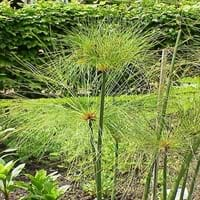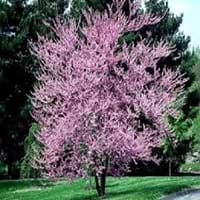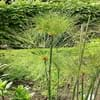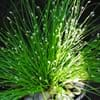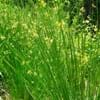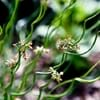Life Span
Annual and Perennial
Perennial
Origin
Hybrid origin
Northeastern United States, Mid-Atlantic United States, Southeastern United States, North-Central United States, Central United States, South-Central United States, Canada
Types
Mexican Papyrus, Dwarf Papyrus, Giant Papyrus
Not Available
Habitat
Moist Soils, tropical environments, Tropical regions, Wet ground, Wet lands
Alpine Meadows, shaded woods
USDA Hardiness Zone
9-12
4-9
Sunset Zone
H1, H2, 8, 9, 12, 13, 14, 15, 16, 17, 18, 19, 20, 21, 22, 23, 24
1a, 1b, 2a, 2b, 3a, 3b, 7, 8, 9, 10, 11, 12, 13, 14, 15, 16, 17, 18, 19, 20
Habit
Clump-Forming
Oval or Rounded
Minimum Width
Not Available
Flower Color
Sandy Brown
Red, Purple, Violet
Flower Color Modifier
Bicolor
Bicolor
Fruit Color
Brown
Brown, Chocolate
Leaf Color in Spring
Dark Green
Purple, Plum
Leaf Color in Summer
Dark Green
Green, Dark Green
Leaf Color in Fall
Dark Green
Yellow, Yellow green
Leaf Color in Winter
Dark Green
Not Available
Leaf Shape
Grass like
Heart-shaped
Plant Season
Spring, Summer, Fall, Winter
Spring, Summer, Fall
Sunlight
Full Sun, Partial Sun
Full Sun, Partial Sun
Type of Soil
Clay, Loam, Sand
Clay, Loam, Sand
The pH of Soil
Neutral
Acidic, Neutral, Alkaline
Soil Drainage
Poorly Drained
Well drained
Bloom Time
Summer
Early Spring, Spring, Late Spring
Tolerances
Drought
Drought
Where to Plant?
Container, Ground, Pot
Ground
How to Plant?
Stem Planting
Cuttings
Plant Maintenance
Medium
Medium
Watering Requirements
Average Water Needs, Keep ground moist, Requires a lot of watering
Keep the ground moist but not water-logged
In Summer
Lots of watering
Lots of watering
In Spring
Moderate
Moderate
In Winter
Average Water
Average Water
Soil pH
Neutral
Acidic, Neutral, Alkaline
Soil Type
Clay, Loam, Sand
Clay, Loam, Sand
Soil Drainage Capacity
Poorly Drained
Well drained
Sun Exposure
Full Sun, Partial Sun
Full Sun, Partial Sun
Pruning
Remove damaged leaves, Remove dead branches, Remove dead leaves
Prune to stimulate growth, Remove damaged leaves, Remove dead branches, Remove dead leaves
Fertilizers
All-Purpose Liquid Fertilizer
All-Purpose Liquid Fertilizer
Pests and Diseases
Red blotch
Bacterial Canker, Verticillium Wilt
Plant Tolerance
Drought
Drought
Flower Petal Number
Single
Single
Foliage Texture
Fine
Medium
Foliage Sheen
Glossy
Glossy
Attracts
Flying insects, Hummingbirds
Birds
Allergy
Not Available
Unknown
Aesthetic Uses
Showy Purposes
Beautification, Formal Garden, Ground Cover, Showy Purposes
Beauty Benefits
Not Available
Not Available
Edible Uses
Insignificant
Yes
Environmental Uses
Air purification
Air purification, Food for animals, Food for birds, Nesting sites for birds
Medicinal Uses
Cancer, Heals minor burns, Wounds
Unknown
Part of Plant Used
Stem
Not Applicable
Other Uses
Constructing Boats, Used as fuel, Used in paper industry
Beneficial species for attracting pollinators, Used as Ornamental plant
Used As Indoor Plant
Yes
No
Used As Outdoor Plant
Yes
Yes
Garden Design
Bog Garden, Container, Feature Plant, Houseplant, Mixed Border, Water Gardens
Feature Plant, Foundation, Mixed Border, Shade Trees
Botanical Name
CYPERUS 'Wild Spike'
CERCIS canadensis 'Forest Pansy'
Common Name
Papyrus, Wild Spike Cyperus
Eastern Redbud, Forest Pansy Redbud
In Hindi
पेपिरस संयंत्र
Forest Pansy Redbud
In German
Papyrus-Pflanze
Forest Pansy Redbud
In French
usine papyrus
gainier du Canada
In Spanish
planta del papiro
Cercis canadensis
In Greek
πάπυρο
Forest Pansy Redbud
In Portuguese
planta do papiro
Forest Pansy Redbud
In Polish
Papyrus roślin
Judaszowiec kanadyjski
In Latin
cHARTA
Forest Pansy Redbud
Phylum
Magnoliophyta
Spermatophyta
Class
Agaricomycetes
Magnoliopsida
Family
Cyperaceae
Fabaceae
Clade
Angiosperms, Commelinids, Monocots
Angiosperms, Eudicots, Rosids
Tribe
Cariceae
Not Available
Subfamily
Cyperoideae
Not Available
Number of Species
Not Available
Not Available
Season and Care of Papyrus and Forest Pansy Redbud
Season and care of Papyrus and Forest Pansy Redbud is important to know. While considering everything about Papyrus and Forest Pansy Redbud Care, growing season is an essential factor. Papyrus season is Spring, Summer, Fall and Winter and Forest Pansy Redbud season is Spring, Summer, Fall and Winter. The type of soil for Papyrus is Clay, Loam, Sand and for Forest Pansy Redbud is Clay, Loam, Sand while the PH of soil for Papyrus is Neutral and for Forest Pansy Redbud is Acidic, Neutral, Alkaline.
Papyrus and Forest Pansy Redbud Physical Information
Papyrus and Forest Pansy Redbud physical information is very important for comparison. Papyrus height is 45.70 cm and width Not Available whereas Forest Pansy Redbud height is 760.00 cm and width 760.00 cm. The color specification of Papyrus and Forest Pansy Redbud are as follows:
Papyrus flower color: Sandy Brown
Papyrus leaf color: Dark Green
Forest Pansy Redbud flower color: Red, Purple and Violet
- Forest Pansy Redbud leaf color: Purple and Plum
Care of Papyrus and Forest Pansy Redbud
Care of Papyrus and Forest Pansy Redbud include pruning, fertilizers, watering etc. Papyrus pruning is done Remove damaged leaves, Remove dead branches and Remove dead leaves and Forest Pansy Redbud pruning is done Prune to stimulate growth, Remove damaged leaves, Remove dead branches and Remove dead leaves. In summer Papyrus needs Lots of watering and in winter, it needs Average Water. Whereas, in summer Forest Pansy Redbud needs Lots of watering and in winter, it needs Average Water.
